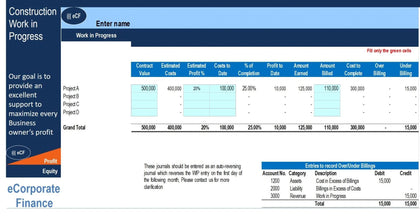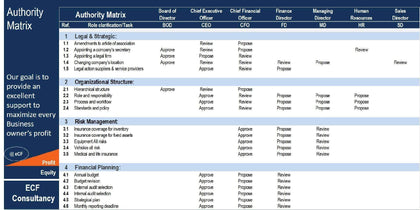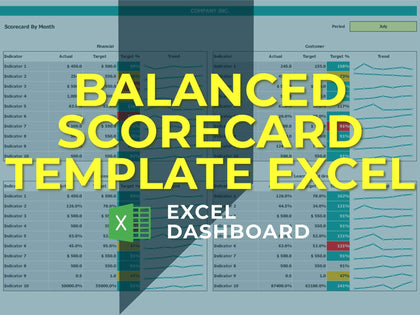Saas Business Plan Actuals Opt-In Financial Model Excel Template
Model Highlight
The saas business plan actuals opt-in 3 way financial model is a full-dimensional 5-year financial planning template for a company operating in a saas business plan actuals opt-in business niche. The template would suit both a saas business plan actuals opt-in startup as well as a running small saas business plan actuals opt-in. Saas Business Plan Actuals Opt-In Financial Model Excel helps to estimate required startup costs. Unlocked - edit all - last updated in Sep 2020.
Model Overview
Generates financial model in excel template for the saas business plan actuals opt-in, cash flow statement proforma, sources and uses, and financial metrics in GAAP/IFRS formats automatically.
FINANCIAL MODEL ADVANTAGES
- Estimate Saas Business Plan Actuals Opt-In Expenses For Next Periods
- Plan For Upcoming Cash Gaps With Saas Business Plan Actuals Opt-In Profit Loss Projection
- Manage Surplus Cash WithSaas Business Plan Actuals Opt-In Financial Model In Excel Template
- Choose One Of 161 Currencies For Settlements
- Identify Your Strength And Weaknesses
- Avoid Cash Flow Shortfalls With Saas Business Plan Actuals Opt-In Financial Projection Template
- Identify Saas Business Plan Actuals Opt-In Cash Inflows And Outflows
- Easily Enter All Assumptions In One Place
SAAS BUSINESS PLAN ACTUALS OPT-IN THREE WAY FINANCIAL MODEL KEY FEATURES
Works for startups
Creates a financial summary formatted for your pitch deck
Print-ready Reports
Solid package of print-ready reports, including a profit and loss proforma, cash flow forecast, a balance sheet, and a complete set of financial ratios.
Great Value for Money
Use a robust and proven Saas Business Plan Actuals Opt-In Cashflow Projection based on years of experience at an affordable price. This profit loss projection has a one-off payment and absolutely no hidden fees or monthly payments.
Saves you time
Allows you to spend less time on finances and more time on your products, customers and business development
Prove You Can Pay Back the Loan You Requested
When you apply for a business loan, bankers will study your Pro Forma Cash Flow Projection in an attempt to answer this question: Can this business pay back the loan? Requesting a loan without showing your Startup Cash Flow Projection for paying it back is a common way to land in the rejection pile. It is exceptionally accurate if your current cash flow won't cover all of your monthly operating expenses — plus your loan payment. Don't fall into this kind of situation. Use Startup Cash Flow Projection to strengthen your case by showing the banker exactly how you plan to use the loan and when you will start repaying the debt. This type of forecasting helps you create a road map that can impress a lender with the confidence they need to approve your loan.
Avoid Cash Flow Shortfalls
Unexpected Cash Flow shortfalls can cause significant damage to your business, and it may take months to recover. Negative Cash Flow can appear if you don't continuously track the incoming cash and outgoing of your business. Fortunately, you can solve Cash Flow shortfalls with a bit of effort. Forecasting your Cash Flow will help you identify — and plan for — market fluctuations, sales seasonality, and other cases that can lead to unpredictable Cash Flow. Cash Flow Projection can even help you visualize Cash Flow trends with the help of automatically generated charts and graphs.
WHAT WILL I GET WITH SAAS BUSINESS PLAN ACTUALS OPT-IN FINANCIAL MODEL EXCEL TEMPLATE?
Dashboard
The All-in-one dashboard in this Saas Business Plan Actuals Opt-In Pro Forma Budget contains all core financial inputs and core start-up metrics critical for the companies' financial analysis. It reflects the financial data from a Balance Sheet, an forecasted income statement, and a cash flow projection. Moreover, users can obtain financial information in the form of graphs or charts.
Cash Flow KPIs
Operating cash flow. Operating cash flow calculation shows how much cash the company generates from the business operations. This calculation does not include secondary sources of revenue, like interest or investments.
Liquidity KPIs
Accounts payable turnover (APT). The accounts payable turnover ratio (APT) is a short-term liquidity metric that helps to quantify the rate at which a company pays off its suppliers. Accounts payable turnover shows how many times a company pays off its accounts payable within a certain period. This financial metric is a short-term debt of a company, and the accounts payable turnover ratio shows how efficiently a company pays its debts.
Top Expenses
It is very important for a start-up and existing company to monitor, plan, and manage its costs and expenses to maintain a good profitability level. For this purpose, it is necessary to analyze the highest costs and always work on their optimization. In our 3 Way Forecast Model we have created a Top expense report helps users with this task. It summarizes the four biggest expense categories and the rest of the expenses as the 'other', so the users can easily monitor these expenses and track the tendencies related to their increase or decrease from year to year.
Financial KPIs
The Saas Business Plan Actuals Opt-In Three Statement Financial Model has key financial indicators (KPIs) that show sales and profitability performance: revenue growth rate, gross margin, and EBITDA margin. It also has KPIs related to cash flows and raising investment: the cash burn rate, runway and funding need. You can choose the KPIs relevant to your company and industry, and monitor your company's performance. For example, SaaS companies typically monitor and manage customer lifetime value (LTV), customer acquisition costs (CAC), LTV/CAC ratio, and the churn rate. For SaaS businesses, these KPIs are crucial.
Valuation
With our Saas Business Plan Actuals Opt-In Pro Forma, you will get proformas for valuation analysis. You will be able to perform a Discounted Cash Flow (DCF) valuation analysis and other valuations you may need.
Profitability KPIs
EBIT. Earnings before interest and tax (EBIT) is a financial metric that subtracts the cost of sales and other operating expenses from revenues.











































